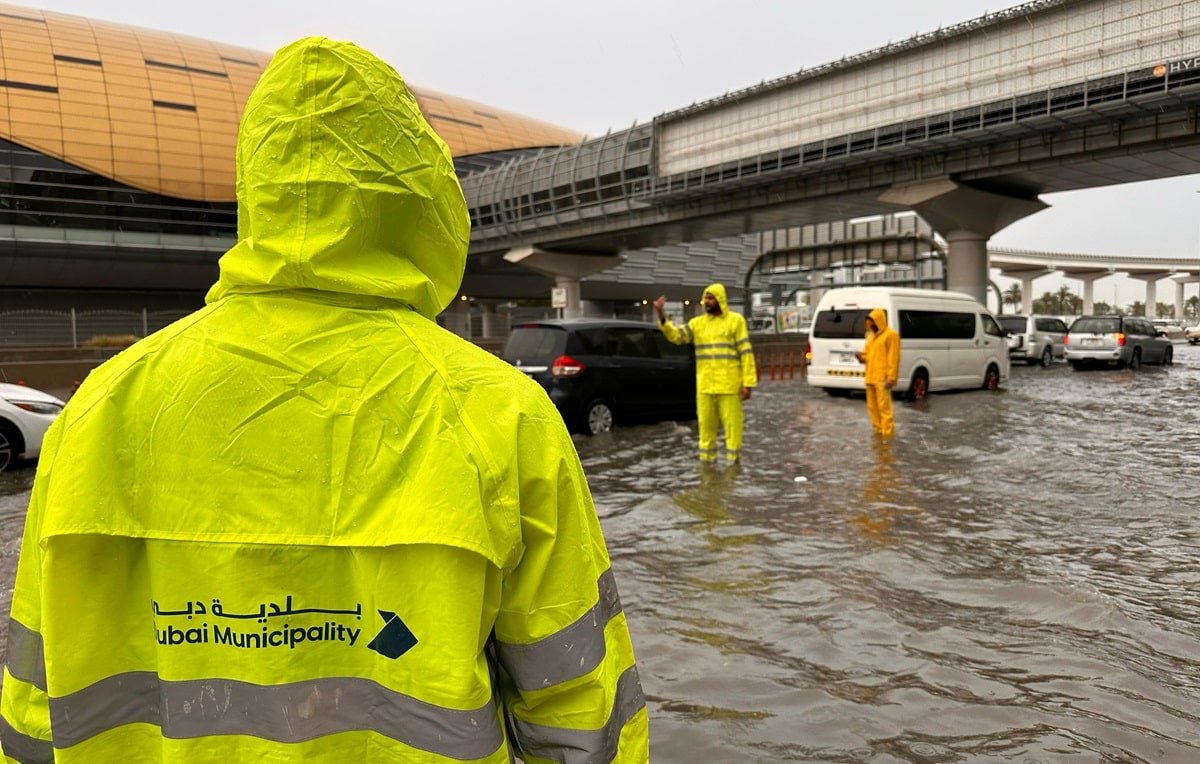In an extraordinary turn of events, heavy rainfall inundated various parts of the United Arab Emirates on Tuesday, effectively drenching the desert metropolis of Dubai with an astonishing amount of precipitation equivalent to over a year and a half’s worth of rain, within mere hours. This deluge resulted in significant flooding along major highways and even impacted operations at the international airport.
Experts are attributing this dramatic weather event, in part, to the innovative practice of cloud seeding—a technique the UAE has been pioneering. Situated in one of the most arid and scorching regions globally, the UAE’s venture into cloud seeding technology aims to address the perennial challenge of water scarcity, with the average annual precipitation in the Persian Gulf region barely reaching 100 millimeters (3.9 inches).
The strategic implementation of cloud seeding aligns with the UAE’s vision to sustainably meet the water demands of its burgeoning population and its rapidly diversifying economy, particularly as it embraces sectors like tourism.
It’s worth noting that the UAE isn’t alone in its utilization of this groundbreaking technology. Other nations in the region, including Saudi Arabia and Oman, are also leveraging cloud seeding to enhance precipitation within their borders. Moreover, beyond the Middle East, countries like India are exploring similar methodologies to combat environmental challenges such as pollution and water scarcity.
But what exactly is cloud seeding, and how does it work?
Cloud seeding, also known as artificial rain, is a sophisticated weather modification technique designed to stimulate precipitation. By introducing substances like silver iodide or potassium iodide into clouds via aircraft or helicopters, this process promotes the condensation of water vapor, leading to the formation of raindrops or ice crystals and subsequent rainfall.
The success of cloud seeding hinges on specific meteorological conditions, including the presence of moisture-laden clouds and suitable wind patterns. This innovative approach isn’t merely about influencing weather patterns; it’s a strategic tool for agricultural, environmental, and water resource management objectives.
However, amid its potential benefits, cloud seeding isn’t without its drawbacks.
One significant concern is the possibility of unintended consequences, such as the diversion of rainfall from one region to another, potentially exacerbating drought conditions elsewhere. Moreover, the infrastructure in areas where cloud seeding is deployed may not be equipped to handle the sudden influx of precipitation, leading to floods and infrastructure damage.

Recent events in Oman, where heavy rains triggered fatal flooding, underscore the gravity of these risks. Oman, like its neighbor the UAE, has embraced cloud seeding as a means of enhancing precipitation, yet it also faces the sobering reality of its potential repercussions.
Furthermore, the use of chemicals like silver iodide raises valid ecological concerns, with potential long-term impacts on ecosystems and human health. From ocean acidification to ozone layer depletion, the ramifications extend far beyond immediate weather manipulation.
In essence, while cloud seeding represents a remarkable feat of human ingenuity in addressing water scarcity and influencing weather patterns, it also demands careful consideration of its environmental and societal implications. As nations continue to navigate the complexities of climate change and resource management, striking a balance between innovation and sustainability remains paramount.


